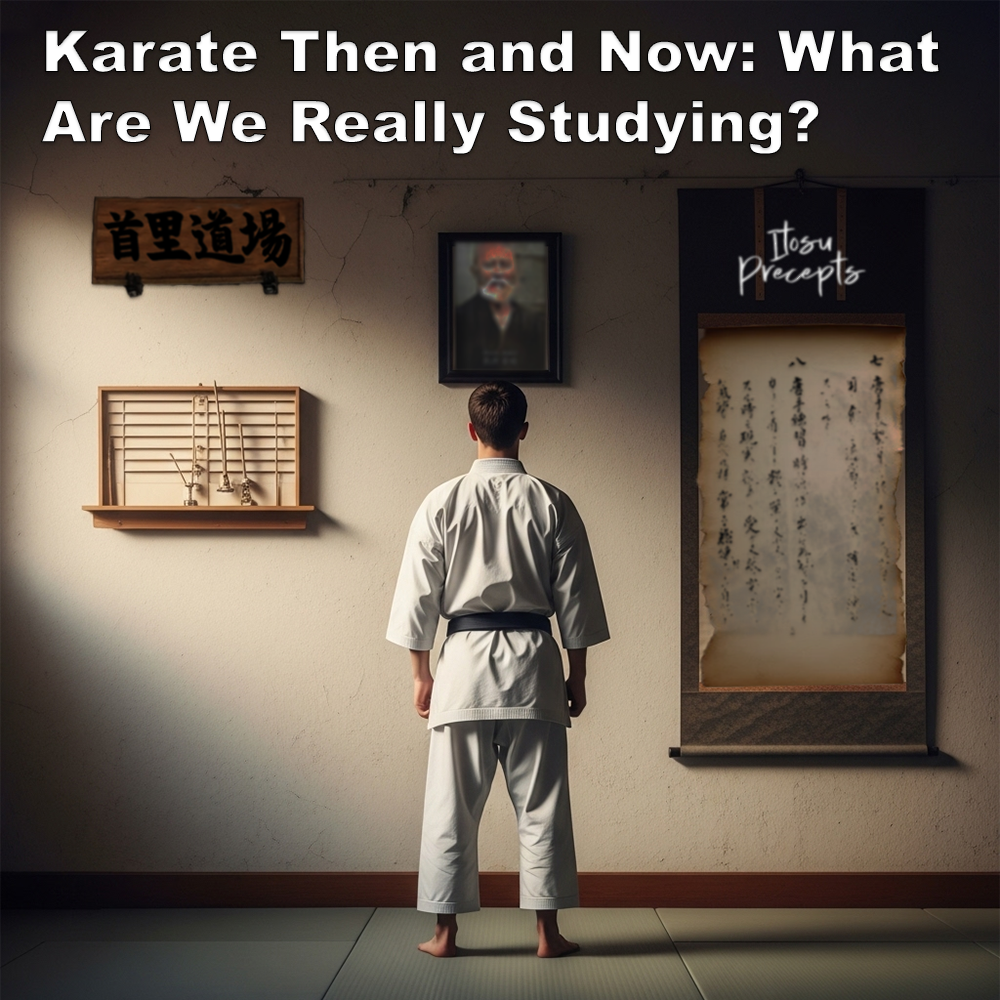
Karate Then and Now: What Are We Really Studying?
Posted by ADAM CARTER on MAY 26, 2025

Karate Then and Now: What Are We Really Studying?
(Approx 2 minute 30 second read)
When karate was widely introduced to the public through the school system in Japan in the early 1930s, it had to meet certain criteria. To be accepted, the curriculum needed to promote physical health, build confidence, improve endurance, enhance concentration, and so on.
It specifically could not be promoted as a means to hurt people. That would have been unacceptable for what was expected of this new version of karate.
So, a carefully considered syllabus was created – what we now recognize as traditional karate-do.
The dangerous elements from earlier, classical karate were removed or modified, and safeguards were put in place.
A great number of people today believe that what they’ve been taught is highly effective in real situations. I get so many messages telling me this.
They say they’ve spent a lot of time and effort learning this material. So I must know what I’m talking about. But do they?
From what I’ve observed… most people don’t do very well against untrained or trained, experienced fighters who have the intent to hurt people.
However, the fact is, you’ve still gained a lot from your efforts – improved attention span, better physical health, enhanced endurance and flexibility. Your character may have improved (see my recent article), and so on. That’s great, and that’s exactly what traditional karate-do was designed to provide.
I recently wrote about how effective step-kumite is – for nothing more than step-kumite. It bears no relation to anything practical or pragmatic. I was told by many that it’s important for beginners to progress. I received plenty of comments on this.
One person mentioned that some senior grades are still expected to perform three and five-step routines during gradings.
These outdated drills are often kept alive not because they’re effective, but to satisfy grading requirements rather than reflect any real practical value.
Now, I understand the political tightrope some instructors have to walk. But that doesn’t change the fact that many of these drills offer limited benefit beyond ticking a box.
If we know better, we should aim to do better – or move on if it no longer aligns with our goals.
It’s a fair point, isn’t it?
However, it must be understood that the older, classical karate – as I like to call it – is down-and-dirty, succeed-at-all-costs stuff. It wasn’t designed to build character, mold future leaders, or improve this or that. It was designed to conquer.
The karate that the pioneering masters created had no philosophical or physiological considerations. Itosu’s letter of 1908 begins with, “Karate did not develop from Buddhism or Confucianism.” He clearly thought it important to establish from the outset that the art he practiced wasn’t an offshoot of those religions or philosophies – so we know it was built on observation and what worked.
So, when studying classical karate – and especially the kata – it must be done with the knowledge and mindset from over a hundred years ago. Step back in time and view things with the perspective appropriate to when the kata were created.
Remember the open mind you had as a karate beginner? You need that same open mind to learn from kata. Let go of preconceptions. Approach them with the curiosity of a beginner and the eagerness to explore and learn.
The past holds answers – but only if we’re willing to look with eyes that see, not just watch with eyes that expect. You don’t study kata to confirm what you already believe. You study it to challenge what you think you know.
Written by Adam Carter
